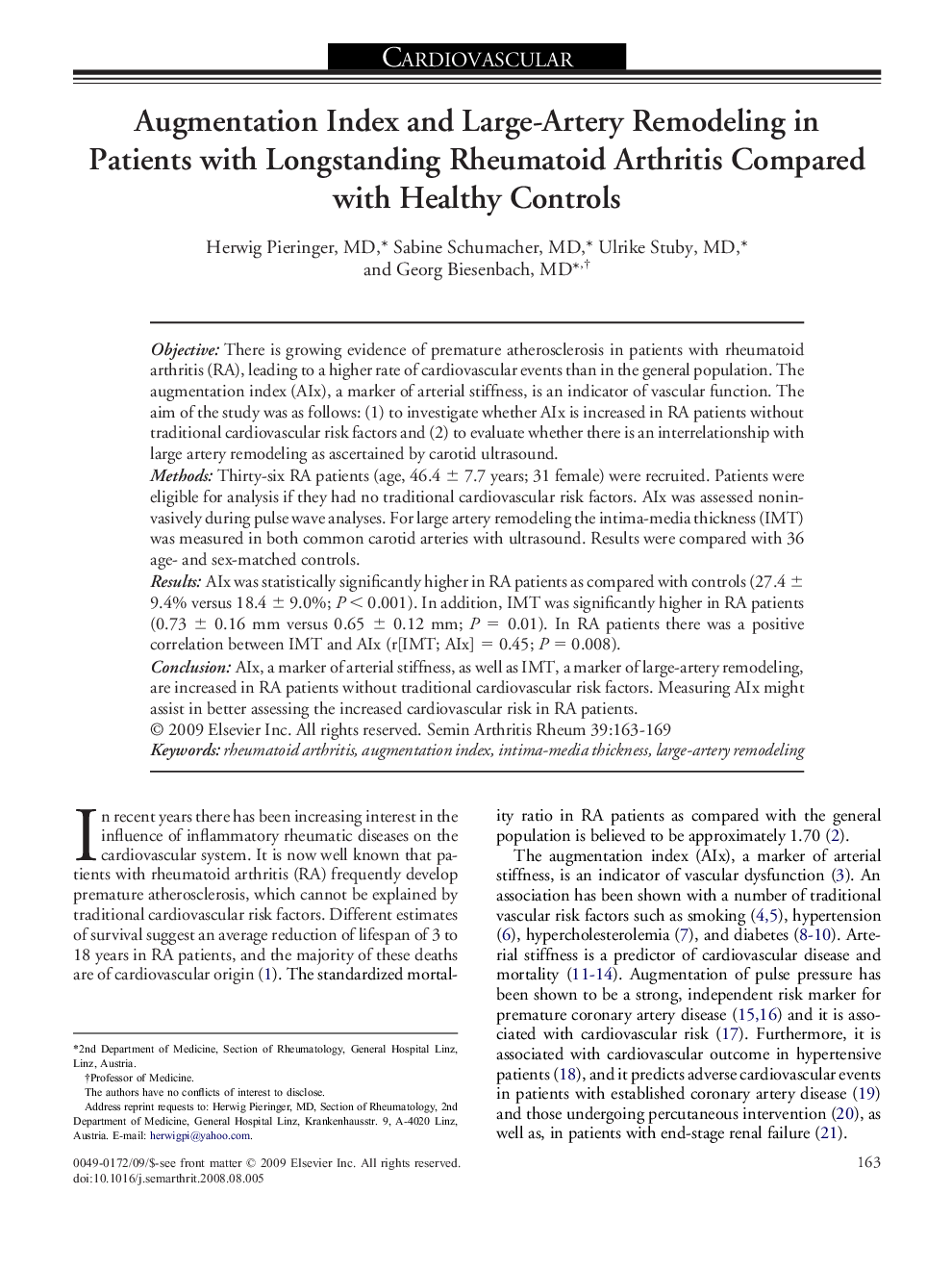| Article ID | Journal | Published Year | Pages | File Type |
|---|---|---|---|---|
| 2771733 | Seminars in Arthritis and Rheumatism | 2009 | 7 Pages |
ObjectiveThere is growing evidence of premature atherosclerosis in patients with rheumatoid arthritis (RA), leading to a higher rate of cardiovascular events than in the general population. The augmentation index (AIx), a marker of arterial stiffness, is an indicator of vascular function. The aim of the study was as follows: (1) to investigate whether AIx is increased in RA patients without traditional cardiovascular risk factors and (2) to evaluate whether there is an interrelationship with large artery remodeling as ascertained by carotid ultrasound.MethodsThirty-six RA patients (age, 46.4 ± 7.7 years; 31 female) were recruited. Patients were eligible for analysis if they had no traditional cardiovascular risk factors. AIx was assessed noninvasively during pulse wave analyses. For large artery remodeling the intima-media thickness (IMT) was measured in both common carotid arteries with ultrasound. Results were compared with 36 age- and sex-matched controls.ResultsAIx was statistically significantly higher in RA patients as compared with controls (27.4 ± 9.4% versus 18.4 ± 9.0%; P < 0.001). In addition, IMT was significantly higher in RA patients (0.73 ± 0.16 mm versus 0.65 ± 0.12 mm; P = 0.01). In RA patients there was a positive correlation between IMT and AIx (r[IMT; AIx] = 0.45; P = 0.008).ConclusionAIx, a marker of arterial stiffness, as well as IMT, a marker of large-artery remodeling, are increased in RA patients without traditional cardiovascular risk factors. Measuring AIx might assist in better assessing the increased cardiovascular risk in RA patients.
